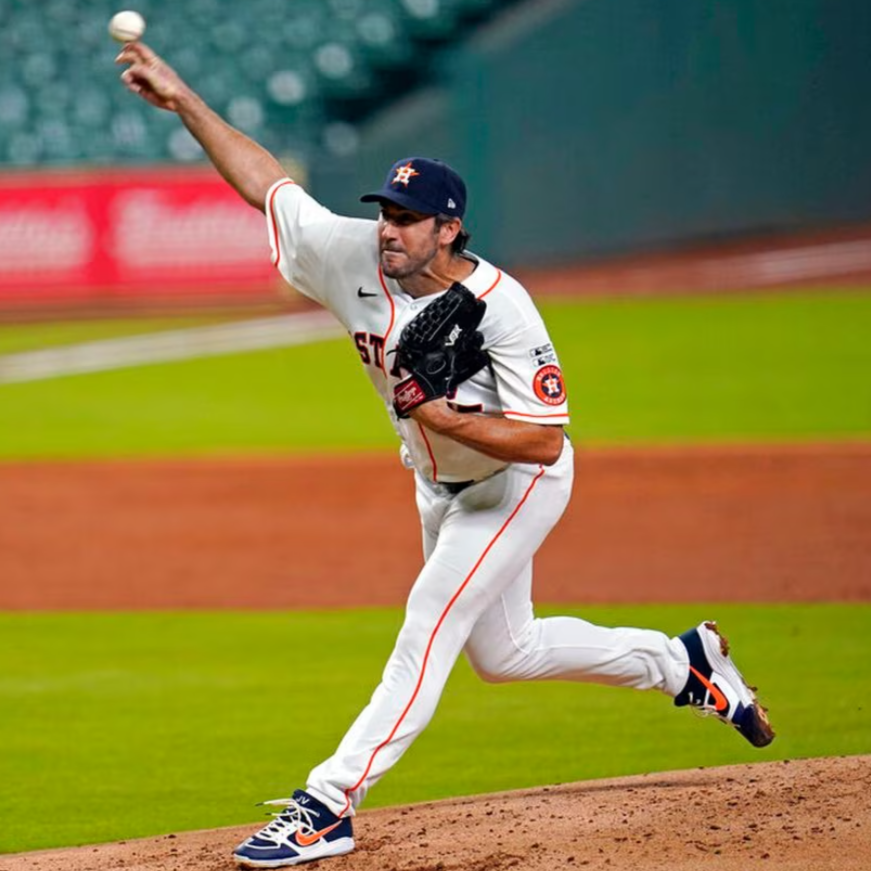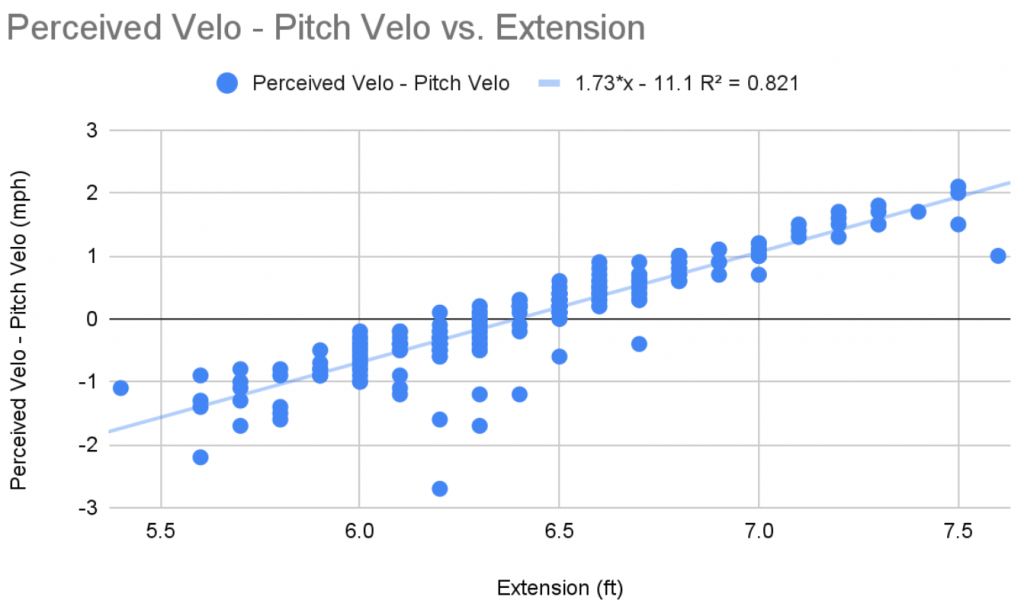
Two pitchers both throwing 90 mph… are they both just as fast? Well, it depends. Just because a pitcher is hitting 90 on the gun does not mean that the batter sees 90, which is what matters most in the game. One of the main factors that affects how fast your pitch looks to the batter is your extension at release, more commonly referred to as release extension. How important is it? and what’s stopping you from maximizing the amount of extension you can get? Let’s dissect it…
What is Release Extension?
Release Extension is defined by the distance from the front of the rubber to where the pitcher releases the baseball. Having more extension is important because the closer you release the ball to home plate, the less time it takes the pitch to reach the plate. For example, let’s say you have 2 pitchers that each throw a 90 mph fastball, but one pitcher has an extension of 7 feet, while the other only has an extension of 6 feet. The 90 mph fastball from the pitcher that extends 7 feet will appear faster because it will reach the plate quicker since it has slightly less distance to travel and in a game of inches and milliseconds it can make a difference.
Baseball Savant refers to this speed as “Perceived Velocity”. This is the velocity that hitters see when they’re in the box. Pitchers who have higher perceived velocity are known to have fastballs that get on batters quicker than expected. Having better release extension can help you gain a few mph on your fastball without actually throwing it any harder and allow it to be more effective.

*** Source: Redleg Nation
How Much Extension Should You Be Expected to Get?
One of the main factors that affects how much release extension a pitcher can get is, not surprisingly, height. Of the 5 pitchers who have the greatest extension in the MLB (7.5 feet), 4 of them are taller than 6’5”. However, height does not have to be a limiting factor in getting good extension. Devin Williams is able to get 7.5 feet of extension on his fastball while only standing at 6’2”. Here are some other physical factors that can affect how much extension you can get on a pitch:
Mobility (lats, hip extension, shoulder, fingers): If a pitcher is not mobile and has multiple ROM restrictions, it will seriously hinder their extension. You will often find that pitchers who do not extend well will have the following limitations: hip extension, tight pecs, lats, serratus anterior (just to name a few).
Arm Path (push vs unravel): An arm path that is inefficient will result in release extension issues. Short and abbreviated arm actions will cause the arm to become pushy where the elbow leads the throw releasing the ball too soon as opposed to being able to hold on to the ball longer delaying extension improving the ability to leverage the baseball better. The arm unraveling on time will allow the pitcher to pronate more effectively.
Lead Leg Block: To further expand on mobility, a big factor is to evaluate both hip internal and external rotation. A result of having tight hips would be the pitcher failing to both block with the lead leg and continue rotating around the front hip. A solid lead leg block will allow the torso to rotate and extend over the front hip. Pitchers who possess more IR will be able to hold on to the baseball longer. Failure to post up and rotate efficiently will create a very inconsistent and much shorter release point.
Anterior Core Strength/Stiffness: Pitchers who lack sufficient core strength/stiffness will not be able to properly get into and hold a powerful position at foot plant. Insufficient core strength will lead to a pitcher losing his posture as he transitions from leg lift to foot plant. With the pitcher becoming unstable due to the loss of posture, it will result in a lack of forward trunk tilt at release.
Majority of MLB pitchers are able to achieve a release extension of around 1.04 times their height on average for reference. Devin Williams achieves an extension of 1.22 times his height.
How Much of an Effect Does Extension Have on Perceived Velo?
It’s well understood that having a good release extension will help with perceived velo, but by how much?
To find this out, we took every pitcher who threw at least 1,000 4-seam fastballs the past 3 seasons and grabbed their perceived velo, pitch velo, and extension. We then took the difference between their perceived velo and pitch velo and compared it to their extension. Average MLB release extension is around 6.3 feet, and since perceived velo is related to extension, we expect that a fastball thrown at that extension will have the same perceived velo as pitch velo (i.e. a 94 mph 4-seamer would look like a 94 mph 4-seamer at 6.3 feet of extension). Similarly, we expect that any release extension greater than 6.3 feet would yield a perceived velo that is greater than the pitch velo and vice versa.

On average, every extra foot of extension from the average of 6.3 feet results in a 1.7 mph difference between the perceived velo and pitch velo. For instance, someone with 7.3 feet of extension would be expected to gain around 1.7 mph on their fastball while someone with 5.3 feet of extension would be expected to lose around 1.7 mph on their fastball.
Closing Remarks
While release extension is an important aspect to pitching, it’s not necessarily the end all be all. There are many factors that go into being a good pitcher, with release extension being just one piece to a very complex puzzle.
There are plenty of pitchers who have success in the MLB despite having low extension, including Giovanny Gallegos, Marcus Stroman, Sam Moll, and Julio Urias, who each have success using their fastballs despite throwing them in the low 90s with less than 5.8 feet of extension. Furthermore, if you’re creating release extension simply by lunging forward during your stride and not by keeping your weight back to create separation, you could actually be costing yourself velocity rather than gaining it.
With that being said, if you want to maximize the amount of velo you’re getting on your fastball, creating plus release extension could help you start blowing fastballs by batters.
By Brett Cerenzio (Data Analyst at RPP Baseball, rising Junior pursuing a Sport Analytics Bachelor’s Degree with a minor in Economics at Syracuse University, ) and Niko Leontarakis (Pitching Coordinator at RPP Baseball)
You live too far to train with us in-house at RPP? You can now train with us on a REMOTE basis.


